#landfowl
Text

Drawing Birds. Written and illustrated by Maurice Wilson. Published in 1965.
Internet Archive
313 notes
·
View notes
Text
BOTD: Scaled Quail

Photo: Grigory Heaton
"Dry southwestern grasslands provide a home for this blue-gray quail. Coveys of Scaled Quail travel about on foot; even when disturbed, they tend to run rather than flying. In the concealing cover of the short grass they can be inconspicuous except in spring, when males often call from atop fenceposts or exposed rocks. At night, coveys of Scaled Quail roost on the ground in dense low growth."
- Audubon Field Guide
#birds#scaled quail#birds of north america#north american birds#quail#quails#birds of the us#birds of mexico#landfowl#bird watching#birdblr#birblr#bird of the day#Callipepla squamata
545 notes
·
View notes
Note
Trick or treat?
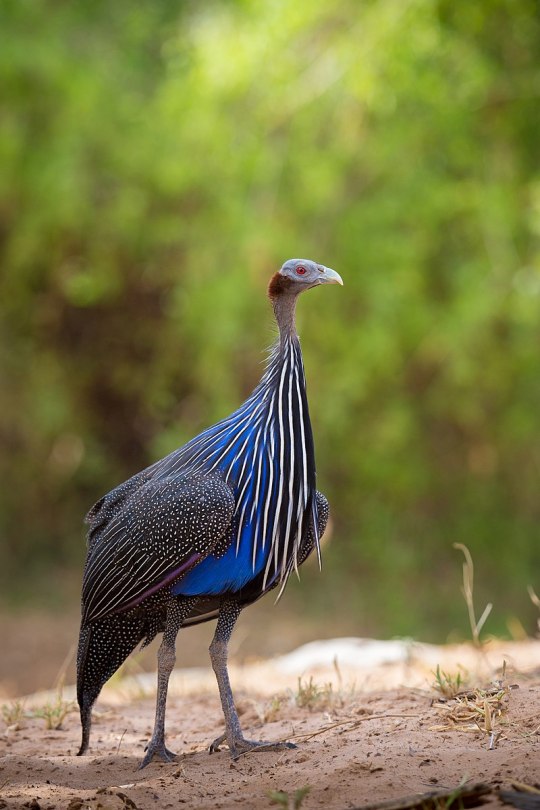
Vulturine Guineafowl!
51 notes
·
View notes
Photo

Helmeted Guineafowl (Numida meleagris)
Family: Guineafowl Family (Numididae)
IUCN Conservation Status: Least Concern
Widely distributed across Sub-Saharan Africa, Helmeted Guineafowl (singular and plural) are easily recognized thanks to their striking spotted bodies, featherless blue-skinned heads and namesake bony "helmets” (which are short and rounded in females and taller and sharper in males.) Spending the day foraging on the ground and roosting in the branches of trees at night, members of this species favour dry, open habitats and live in large flocks throughout most of the year, breaking up into mating pairs during the spring breeding season (with both parents working in shifts to incubate their eggs, which resemble speckled Chicken eggs and are laid on the ground in ditches lined with twigs and leaves, and to raise their chicks, which are known as keets and are born without the helmets of adults) and returning to larger groups after their chicks have fledged in the late summer. The diet of Helmeted Guineafowl varies seasonally; throughout most of the year they feed largely on grasses, seeds, bulbs and roots, but as their nutritional needs change during the breeding season small animals such as insects, arachnids, snails and small vertebrates become more prominent in their diet - in particular, they are known to feed on large numbers of grass-dwelling ticks during the spring, and in doing so benefit other animals within their range by limiting the ability of ticks to spread between hosts and transfer diseases. While foraging in groups Helmeted Guineafowl vocalize near-constantly to notify their flockmates of their presence, and at the first sign of one of their many predators (including Leopards, Servals and a wide range of large snakes and birds-of-prey) the first individual to spot it will produce an extremely loud alarm call, prompting the group to scatter and run for shelter (although members of this species can fly in short bursts, they are far more capable on the ground and will only take to the air as a last resort.) Both within their home range and throughout the wider world captive populations of Helmeted Guineafowl have been farmed for their meat and eggs for centuries, allowing escaped feral populations to have become established in parts of Australia, Europe and North America.
--------------------------------------------------------------------------
Image Source: https://www.inaturalist.org/taxa/1428-Numida-meleagris
#Helmeted Guineafowl#guineafowl#bird#birds#galliformes#landfowl#zoology#biology#ornithology#animal#animals#wildlife#african wildlife
55 notes
·
View notes
Text
Common pheasants (Phasianus colchicus) photos I took 18/11/2023, Potteric Carr, South Yorkshire, UK
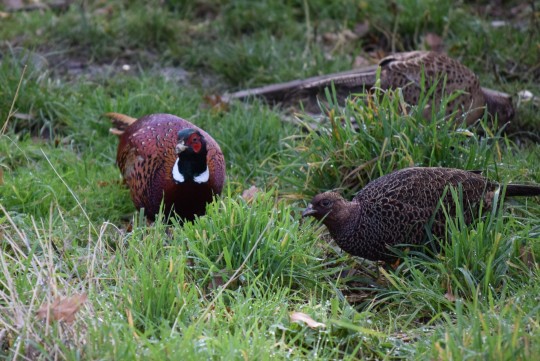
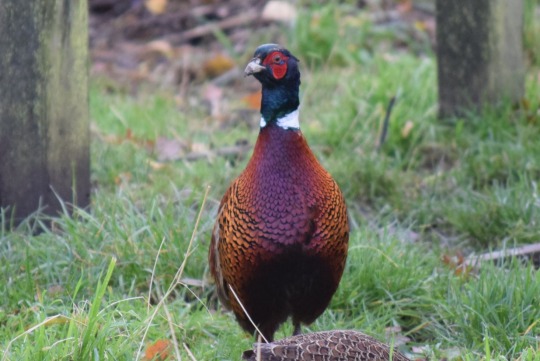




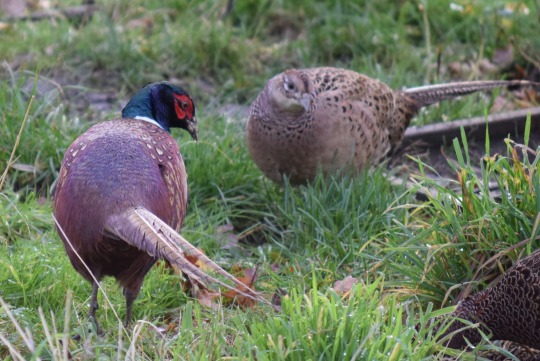

#nature#nature photography#animal#animals#wildlife#animal photography#british nature#wildlife photography#wild animals#pheasant#pheasants#phasianidae#galliformes#fowl#landfowl#bird watching#birding#birds#bird photography#birdwatching#birdblr#bird#ornithology#wild animal#british birds#british wildlife#aves#avian#wild planet#wild
7 notes
·
View notes
Text


animal beasts from a cool zoo trip
3 notes
·
View notes
Photo
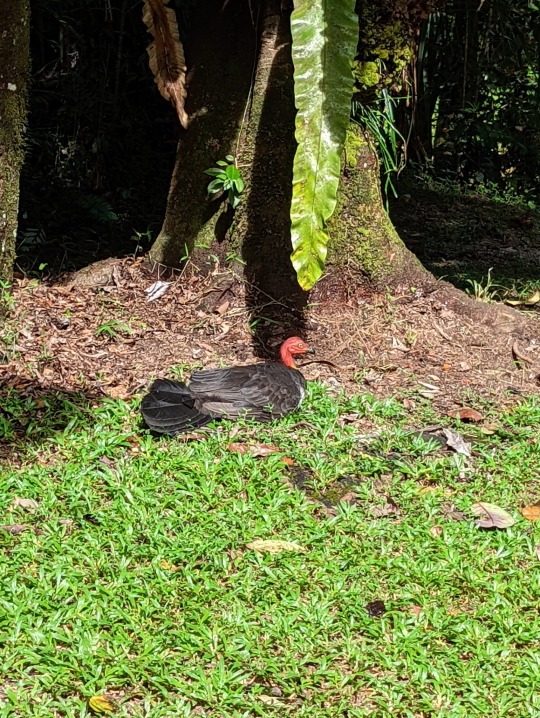

Bush Turkey Enjoying the Sun
You can really see the chicken resemblance here.
Alectura lathami
06/07/22
#Alectura lathami#Australian Brush-Turkey#Galliformes#Landfowl#Aves#Birds#Chordata#Chordates#Vertebrata#Vertebrates#birblr#birdlr#gifs
19 notes
·
View notes
Text
i wish drawing bird furries wasnt so hard i would have a bird fursona 100000000%
#et cetera#some kind of landfowl... or an archaeopteryx#i literally cannot stand drawing wings thouh sorry i really fucking hate it. i get why so many furry artists#say that drawing winged characters costs extra. i get it.
2 notes
·
View notes
Text
i did my best to include lots of birds. sorry if i missed your favorite or miscategorized it! i am no bird expert
#birds#birdwatching#bird photography#birdblr#polls#tumblr polls#somanypolls#there are a lot of cool birds out there#over 10000!!#and some are not easily categorized lol
6K notes
·
View notes
Text
#birds#harpies#tried to make as broad of categories as possible#to fit more options in#saw a ‘what wereanimal are you?’ poll with a single bird option#which *killed* me. give me more bird options
271 notes
·
View notes
Text

Wild Animals of Yesterday & To-Day. Written by Frank Finn. Illustrated by Cuthbert Edmund Swan. 1913.
Internet Archive
242 notes
·
View notes
Text
BOTD: Ruffed Grouse

Photo: Susan Drury
"Although usually a solitary and retiring forest species, this small grouse makes itself noticeable through the male's persistent percussive displays. This amazing display begins atop a favored platform — usually a log, boulder, or stump — where the male Ruffed Grouse stands tall, braces backwards on his tail, and begins to fan the air by rotating his wings back and forth. This fanning motion creates a compression and release of air that produces a 'thump' sound. He starts slowly, but quickly accelerates the motion until his wings become a blur, producing a sound like a drumroll or distant motor that can be heard from as far away as a quarter-mile or more."
- American Bird Conservancy
#birds#ruffed grouse#birds of north america#north american birds#grouse#landfowl#birds of the us#birds of canada#birding#birdblr#birblr#bird watching#bird of the day#Bonasa umbellus
179 notes
·
View notes
Note
trick or treat!

Chestnut-Bellied Partridge!
Please do not send me more trick or treat asks, I am only answering the ones I could not get to after I hit post limit last night, it is Nov 1st we have other shenanigans to attend to!
20 notes
·
View notes
Text
(if you have any questions about where YOUR favorite falls leave a comment or an ask) (that is what my whole blog is about)
42 notes
·
View notes
Text
Perplexicervix paucituberculata Mayr et al., 2023 (new species)
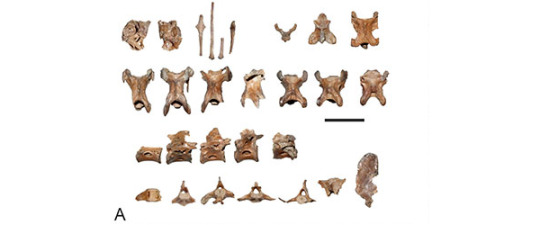
(Type specimen of Perplexicervix paucituberculata [scale bar = 10 mm], from Mayr et al., 2023)
Meaning of name: paucituberculata = little tuberculate [in Latin]
Age: Eocene (Ypresian), 54.6‒55 million years ago
Where found: London Clay Formation, Essex, U.K.
How much is known: Partial skeleton including vertebrae and fragments of the skull. Partial skeletons of two other individuals may also belong to this species.
Notes: P. paucituberculata was an unusual bird that had small bumps covering its neck vertebrae. This feature is shared with the only other species of Perplexicervix that had been previously named, P. microcephalon, as well as with Dynamopterus tuberculatus (a possible close relative to modern seriemas), both of which are from the Eocene of Germany. In fact, the neck vertebrae of P. microcephalon are even more extensively coated in these bumps than those of P. paucituberculata. Similar structures have not been observed in extant birds and their function is unknown. When they were first noticed in fossil birds, it was thought that they may have been the result of an ancient disease that no longer affects birds today. However, the fact that all known specimens of Perplexicervix preserving neck vertebrae have these bumps suggests that they were instead a typical part of their anatomy.
What type of extant bird Perplexicervix was most closely related to is also unclear. Similarities to waterfowl (specifically screamers) had been noted in earlier studies, and the type specimen of P. paucituberculata had been briefly mentioned in a previous paper as an early waterfowl. New specimens, however, indicate that Perplexicervix did not have the characteristic lower jaw anatomy shared by both waterfowl and landfowl. The describers of P. paucituberculata instead note that some of its bones bear noticeable resemblance to those of bustards, a group of often large, ground-dwelling birds that live in Afro-Eurasia and Australasia today. A close relationship with bustards would be very noteworthy if upheld by future research, given that early members of the bustard lineage are otherwise unknown from the Paleogene Period.
Reference: Mayr, G., V. Carrió, and A.C. Kitchener. 2023. On the "screamer-like" birds from the British London Clay: an archaic anseriform-galliform mosaic and a non-galloanserine "barb-necked" species of Perplexicervix. Palaeontologia Electronica 26: 33. doi: 10.26879/1301
#Palaeoblr#Birblr#Dinosaurs#Birds#Perplexicervix paucituberculata#Eocene#Europe#Neoaves#2023#Extinct
37 notes
·
View notes
